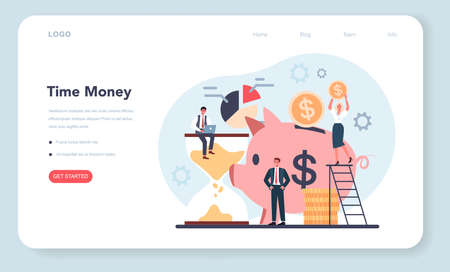1. Understanding Your Student Loan Terms
Key Student Loan Terms Explained
When it comes to repaying your student loans, understanding the basic terms of your loan agreement is crucial. Many borrowers make costly mistakes simply because they aren’t clear about what their loan involves. Here are some important terms you should know:
| Term | What It Means |
|---|---|
| Principal | The original amount of money you borrowed, not including interest. |
| Interest Rate | The percentage charged on your principal each year. This can be fixed (stays the same) or variable (can change). |
| Grace Period | The time after graduation before you have to start making payments, usually 6 months for most federal loans. |
| Loan Servicer | The company that manages your loan and collects payments. |
| Repayment Term | The length of time you have to repay your loan, often 10 years for standard federal plans. |
Federal vs. Private Student Loans: What’s the Difference?
U.S. borrowers often have a choice between federal and private student loans, and knowing the difference can help you avoid major repayment mistakes.
| Federal Loans | Private Loans | |
|---|---|---|
| Who Offers Them? | U.S. Department of Education | Banks, credit unions, or private lenders |
| Interest Rates | Usually lower, fixed rates set by Congress | Can be higher, fixed or variable rates set by lender’s rules and your credit score |
| Repayment Flexibility | Options like income-driven repayment and deferment/forbearance available | Less flexible; options depend on lender policies |
| Eligibility for Forgiveness Programs | Eligible (like Public Service Loan Forgiveness) | Not eligible for federal forgiveness programs |
| Credit Requirements | No credit check required for most loans (except PLUS loans) | Your credit score affects approval and interest rate |
Why Knowing These Details Matters
If you don’t understand these key differences and terms, you might miss out on better repayment options or pay more than you need to in interest. Take the time to review your promissory note (the document you sign when accepting a loan) and reach out to your loan servicer if you have questions about your specific situation.
2. Navigating Repayment Options
Choosing the right student loan repayment plan can make a huge difference in your financial future. There are several options available, and picking the one that fits your life and income is key to avoiding costly mistakes. Here’s a quick overview of the most common federal student loan repayment plans and some tips to help you decide which might be best for you.
Understanding Your Repayment Choices
| Repayment Plan | Main Features | Best For |
|---|---|---|
| Standard Repayment | Fixed monthly payments over 10 years; pays off debt faster with less interest. | Borrowers who can afford higher monthly payments and want to pay off loans quickly. |
| Income-Driven Repayment (IDR) | Payments based on your income and family size; terms up to 20–25 years; may qualify for loan forgiveness after term ends. | Borrowers with lower or variable income, or those seeking Public Service Loan Forgiveness (PSLF). |
| Graduated Repayment | Starts with low payments that increase every two years; pays off debt in 10 years. | Borrowers who expect their income to rise over time. |
| Extended Repayment | Fixed or graduated payments over up to 25 years; lower monthly payments but more interest paid overall. | Borrowers with larger loan balances who need smaller monthly payments. |
How to Pick the Right Plan for You
- Assess Your Income: If your current income is tight or unpredictable, an IDR plan can help keep payments manageable.
- Consider Your Career Plans: If you work in public service, IDR plans may help you qualify for Public Service Loan Forgiveness (PSLF) after 10 years of payments.
- Total Loan Amount: Larger balances may benefit from extended plans, while smaller balances could be paid off faster under the standard plan.
- Interest Costs: Lower monthly payments often mean paying more interest over time. Weigh short-term relief against long-term costs.
- Lifestyle Flexibility: Graduated plans offer flexibility if you expect your salary to increase as your career progresses.
Avoiding Common Pitfalls
- Not Reviewing Annually: Especially with IDR plans, update your income each year or your payment could jump unexpectedly.
- Ignoring Eligibility: Not all loans qualify for every plan. Check which federal loans you have before applying for a new plan.
- Missing Deadlines: Late enrollment or paperwork errors can cause missed payments and credit issues—set reminders!
Your Next Steps
The best way to avoid repayment mistakes is to regularly review your options and pick a plan that fits your changing financial situation. Use the Department of Education’s Loan Simulator tool or talk to your loan servicer for personalized guidance. Remember: it’s okay to switch plans as your life changes—staying informed is your best financial defense.

3. Avoiding Missed Payments and Delinquency
Why Timely Payments Matter
Missing a student loan payment can have serious consequences, such as late fees, negative credit impacts, and even default. Staying on top of your payments is key to protecting your financial future.
Tips for Staying Organized
- Create a Payment Calendar: Use a digital calendar (like Google Calendar) or a planner to mark your due dates each month.
- Set Reminders: Schedule reminders on your phone or computer a few days before your payment is due.
- Track Multiple Loans: If you have more than one loan, make a simple spreadsheet with each loan’s due date, amount, and servicer contact info.
Sample Loan Tracking Table
| Loan Servicer | Due Date | Payment Amount | Status |
|---|---|---|---|
| Navient | 5th of every month | $150 | Active |
| FedLoan Servicing | 15th of every month | $200 | Active |
Setting Up Autopay for Peace of Mind
Most federal and private loan servicers offer autopay options. By enrolling in autopay, your monthly payment will be automatically deducted from your bank account on the due date. This helps you avoid missed payments and sometimes even earns you an interest rate discount—usually about 0.25%.
- How to Enroll: Log in to your loan servicer’s website and look for the “autopay” or “automatic payments” section.
- Monitor Your Account: Make sure you always have enough funds in your bank account to cover the payment and avoid overdraft fees.
- Update if Needed: If you change banks, update your autopay information right away.
Utilizing Loan Servicer Resources
Your loan servicer is there to help you manage repayment. Don’t hesitate to use their resources:
- Email and Text Alerts: Sign up for notifications about upcoming payments or important updates.
- Online Account Access: Check your balance, payment history, and next due date any time online.
- Customer Support: If you’re struggling or need to change your repayment plan, contact customer service—they can walk you through your options like deferment, forbearance, or income-driven plans.
Quick Checklist: Preventing Missed Payments
- Add all due dates to your calendar/planner.
- Enable autopay if possible.
- Sign up for alerts from your loan servicer.
- Review your account regularly for any changes or issues.
- If you anticipate trouble making a payment, call your servicer as soon as possible.
4. Leveraging Loan Forgiveness and Assistance Programs
Many students and graduates don’t realize there are federal programs designed to help make student loan repayment easier, especially if you work in public service or certain high-need professions. Knowing about these options can save you thousands of dollars and years of stress.
Understanding Federal Loan Forgiveness Programs
The U.S. government offers several loan forgiveness programs for federal student loans. Two of the most popular are Public Service Loan Forgiveness (PSLF) and Teacher Loan Forgiveness. Each has its own requirements, but both can provide significant relief if you qualify.
Public Service Loan Forgiveness (PSLF)
If you work full-time for a government agency or a qualifying nonprofit, PSLF could be a great fit. After making 120 qualifying monthly payments under an income-driven repayment plan, the remaining balance on your Direct Loans may be forgiven.
| Requirement | Details |
|---|---|
| Eligible Employment | Full-time at government or qualifying nonprofit organization |
| Loan Type | Federal Direct Loans only |
| Payments Needed | 120 qualifying monthly payments (about 10 years) |
| Repayment Plan | Must use an income-driven repayment plan |
Teacher Loan Forgiveness
This program is available for teachers who work full-time in low-income schools or educational service agencies for five consecutive years. Depending on your subject area, you can get up to $17,500 of your federal Direct or Stafford Loans forgiven.
| Teaching Area | Forgiveness Amount |
|---|---|
| Math, Science, Special Education | Up to $17,500 |
| Other Subjects | Up to $5,000 |
Other U.S. Assistance Programs to Explore
Apart from PSLF and Teacher Loan Forgiveness, there are other programs that might help:
- Nurse Corps Loan Repayment Program: For nurses working in critical shortage facilities.
- Income-Driven Repayment Plan Forgiveness: After 20-25 years of qualifying payments, the remaining balance on eligible loans may be forgiven.
- State-Based Forgiveness Programs: Many states offer their own programs for healthcare workers, lawyers, and teachers willing to work in underserved areas.
- Military Service Benefits: The military offers various loan repayment options for those who serve.
Tip from Financial Experts:
If you think you might qualify for any of these programs, start by contacting your loan servicer and submitting the appropriate forms as soon as possible. Keep records of all your payments and employment certifications to avoid issues down the road.
5. Developing a Long-Term Financial Strategy
Integrating Student Loan Repayment into Your Overall Financial Plan
Paying off student loans doesn’t have to be overwhelming if you create a smart financial plan early on. Start by listing all your monthly expenses, including your minimum loan payments. Next, set up a realistic budget that prioritizes essentials like rent, food, transportation, and your loan payments. Remember, even small extra payments toward your student loans can make a big difference over time.
Sample Monthly Budget for Recent Graduates
| Category | Suggested % of Income | Example Amount (if take-home pay is $3,000/month) |
|---|---|---|
| Rent & Utilities | 30% | $900 |
| Groceries & Food | 15% | $450 |
| Transportation | 10% | $300 |
| Student Loan Payment | 15% | $450 |
| Savings/Emergency Fund | 10% | $300 |
| Entertainment/Other Expenses | 20% | $600 |
Building Credit While Paying Off Loans
Your student loan repayment history plays a big role in building your credit score. Always pay at least the minimum amount due by the deadline each month. Setting up automatic payments can help you avoid missed payments and late fees, both of which can hurt your credit.
Tips for Boosting Your Credit Score Post-Graduation:
- Always pay bills on time: This includes loans, credit cards, and utilities.
- Avoid maxing out credit cards: Keep balances below 30% of your limit.
- Monitor your credit report: Check for errors or signs of identity theft at least once a year.
- Avoid applying for too much new credit at once: Too many hard inquiries can lower your score.
Balancing Student Loans with Other Financial Goals
After graduation, you may want to save for an emergency fund, start investing, or plan for bigger goals like buying a car or home. It’s important to find the right balance so you’re not just focused on debt repayment but also building your financial future.
Prioritizing Your Financial Goals:
- Create an emergency fund: Aim for at least three months’ worth of living expenses.
- Tackle high-interest debts first: If you have any credit card debt with higher interest rates than your student loans, pay those off faster.
- Contribute to retirement savings: If possible, start small with a 401(k) or IRA—many employers match contributions!
- Increase student loan payments when possible: As your income grows, consider putting more toward your loans to save on interest.
- Treat yourself: Allow room in your budget for fun and relaxation to avoid burnout.
The key is to stay organized and adjust as your circumstances change. With a clear plan and steady progress, you’ll build good money habits that last well beyond your student loan repayment years.


